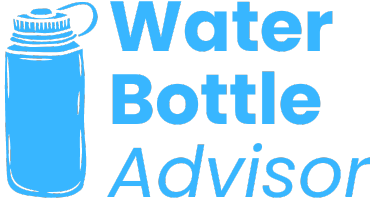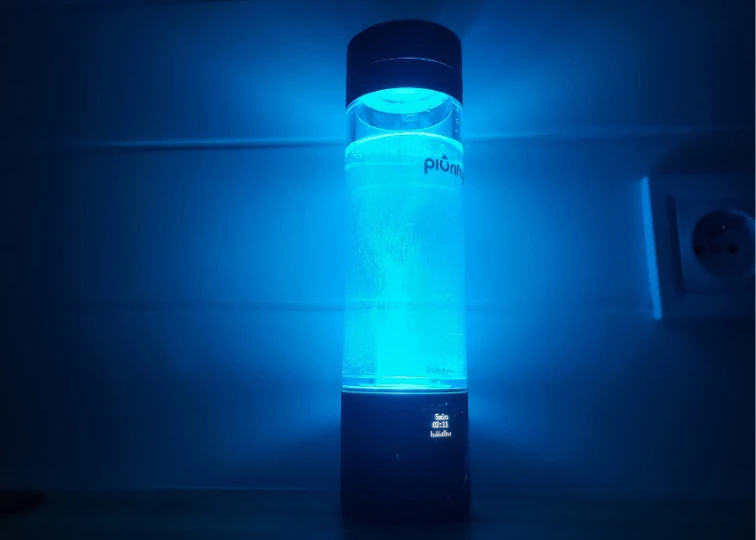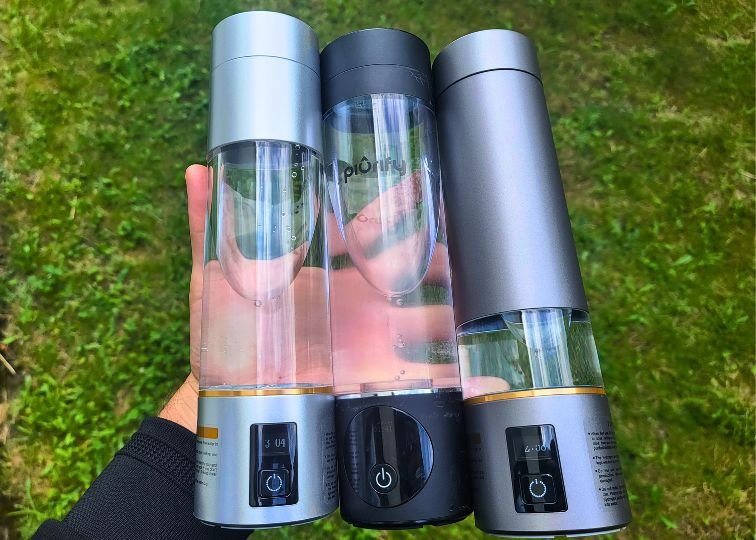While the word “plastic” might set off alarm bells for some of us, there’s a lot to appreciate about plastic water bottles.
Though my go-to choice often leans towards stainless steel for its insulation properties, there are days when the simplicity, lightness, and convenience of plastic options just can’t be beaten.
More importantly, with modern designs, you no longer have to worry about nasty chemicals like BPA sneaking into your water.
In this guide, I’ll share with you my best plastic water bottles. Each one has its own set of perks that make it special, but they all share two things in common – their practicality for hikers, travelers, or anyone in need of hydration on the go, and their surprisingly affordable price tag.
What Are the Best Plastic Water Bottles?
Best Overall: YETI Yonder | 25 oz. Version | 34 oz. Version | 50 oz. Version
Best for Hiking: CamelBak Chute Mag Renew | 25 oz. Version | 32 oz. Version | 50 oz. Version
Best Lightweight: Platypus Platy | 70 oz. Version
Best on Budget: Nalgene Sustain | 16 oz. Version | 32 oz. Version | 48 oz. Version
YETI Yonder
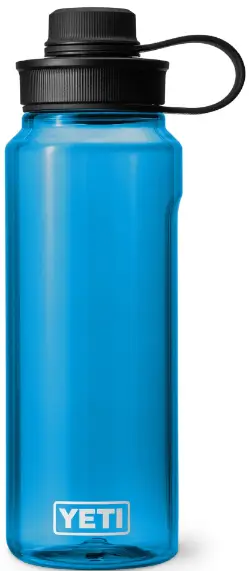
KEY FEATURES
PROS
CONS
The all-new Yonder isn’t your usual YETI bottle. The Yonder stands out because it’s a transparent, non-insulated plastic water bottle.
It breaks the mold by being 50% lighter than the standard insulated Rambler bottle Yeti usually offers. Right now, it’s the featherweight champion of the Yeti product line-up.
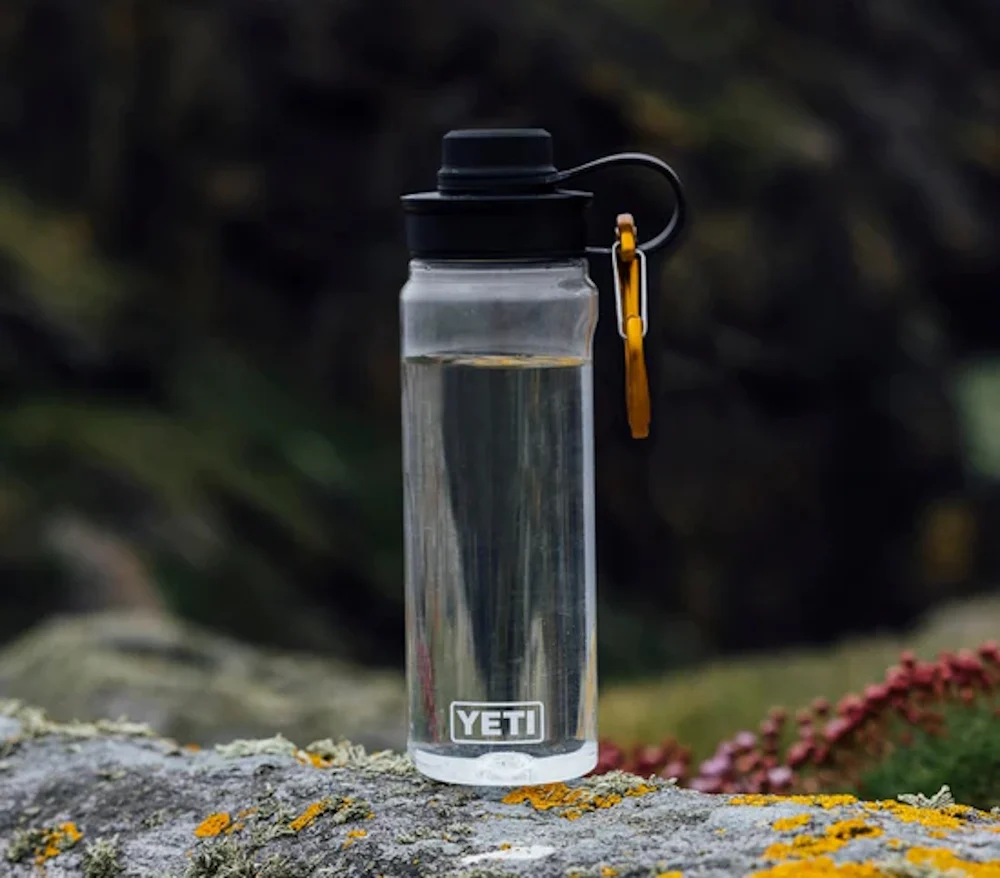
Key Features
The Yonder Tether Cap that comes with this bottle is something special for me. It’s 100% leakproof and comes with an ultra-strong, always-attached leash. This means you can carry your bottle with confidence, knowing it won’t spill.
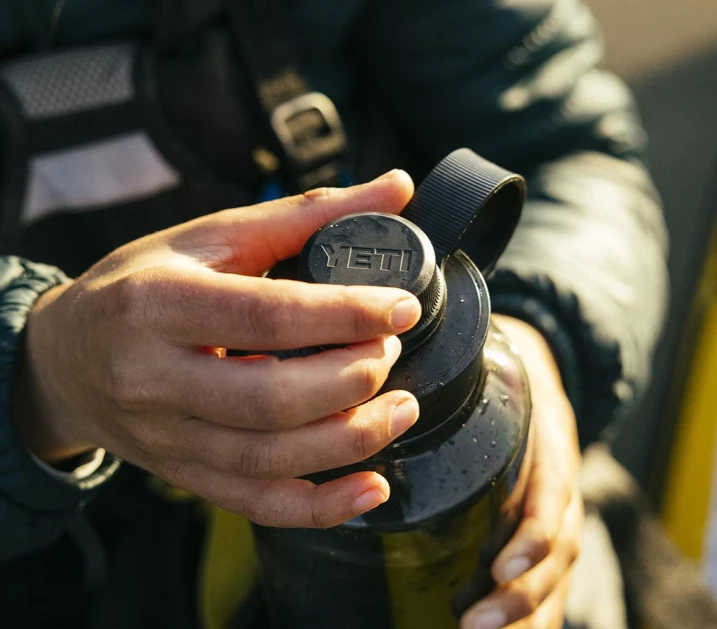
The cap design is clever, too. It has a two-part screw system that allows for easy cleaning and filling. You can unscrew the whole cap, then screw it back on snugly without any fuss about leaks.
When you’re feeling thirsty, just quickly unscrew the spout part and drink up without the mess. It’s a breeze to carry around in one hand, and yes, it’s dishwasher safe.
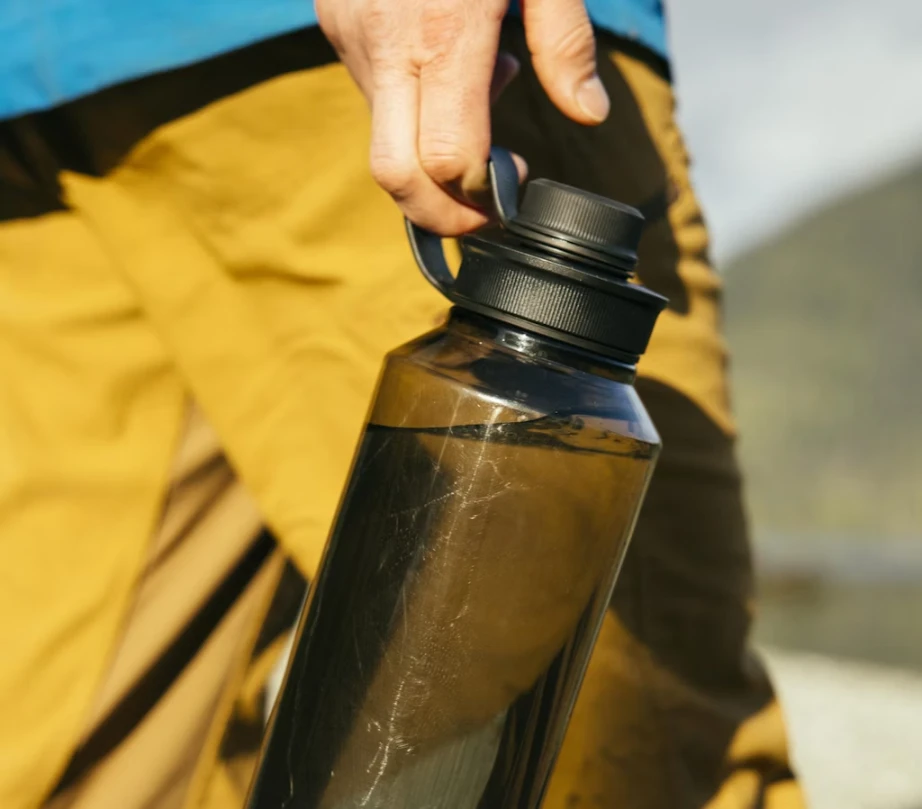
Potential Pitfalls
The Yonder ranges between $22-$30 depending on the size. That’s steep for a plastic water bottle.
Also, because the Yonder doesn’t have insulation and it’s best used for cold, uncarbonated beverages, it’s not super versatile.
Sure, it’s the case with almost all plastic water bottles, but this lack of versatility might make you question the price tag, especially if you’re new to Yeti’s typically high-priced gear.

Finally, for someone like me who loves a good straw cup, it’s a bit disappointing that there isn’t a straw option for the lid. That’s just my personal preference, though!
Verdict
In terms of toughness, a Yonder bottle is likely to last you a lifetime, barring any extreme accidents.
I’ve been also amazed by how light it is. I’m a longtime fan of the Rambler, but it does add weight to my bag. In contrast, the Yonder is so lightweight, I sometimes forget I’m carrying it.
Its portability makes it a great choice for adventures if you’re looking to travel light.
CamelBak Chute Mag Renew

KEY FEATURES
PROS
CONS
At first glance, you might think the CamelBak Chute Mag Renew is just another plastic water bottle. But give it a closer look, and you’ll see it’s packed with thoughtful design and functionality, hard to spot in other plastic bottles in its price range.
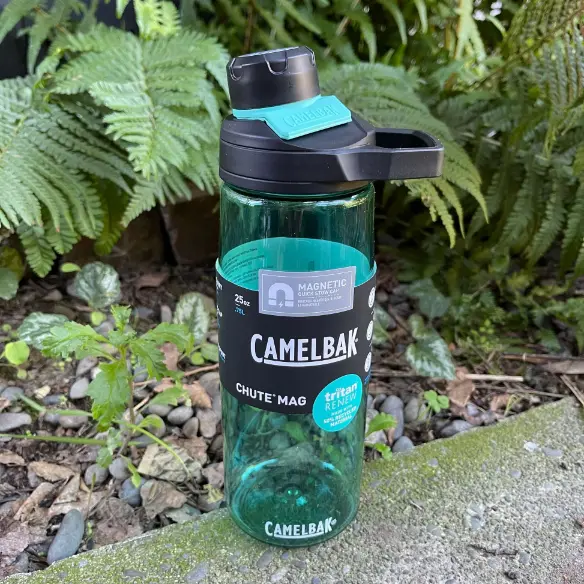
Key Features
The Chute Mag’s double lid is its standout feature, catering to those who love a wide mouth for easy filling and those who prefer a narrow sip for drinking. There’s also a magnetic cap that adds a bit of flair to the usual water bottle experience and makes the cap stay in place while you drink.

This bottle stands out for being lightweight yet durable, a tough combo to achieve. It’s made from materials free of BPA, BPS, and BPF, ensuring your water stays clean and safe. And it’s even dishwasher-safe, which is always a big plus.
Another feature I love is the built-in handle, perfect for toting around with just two fingers. It’s especially handy for pulling out of a backpack’s side pocket and can be easily hooked to a pack for hands-free carrying.

Also, as with all their water bottles, CamelBak throws in their Got Your Bak Lifetime Guarantee, covering you for, well, a lifetime.
Potential Pitfalls
While the double lid with a magnetic cap is innovative, it might not be everyone’s cup of tea. Some might prefer the simplicity of a single-lid bottle for ease of use. Besides, the magnet in the cap is easily strong enough to deflect a compass needle, if you’re an adventurer who relies on one.
Also, operating the screw cap with one hand can be challenging. If you’re often on the move and need to hydrate in a hurry, this might slow you down a bit.

Verdict
Considering its affordable price range of $16-$19, the CamelBak Chute Mag Renew water bottle is a solid choice for anyone looking to carry water wherever they go.
Its perfect mouth size, chemical-free construction, and magnetic cap with a smart handle offer great value for what it costs.
Platypus Platy
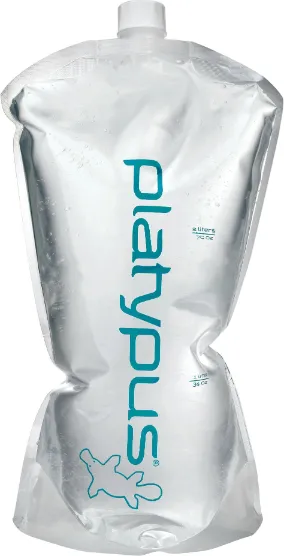
KEY FEATURES
PROS
CONS
The Platypus Platy water bottle has become an essential part of my backcountry gear, and for a good reason. Priced at an affordable $19, it’s a reliable companion for anyone looking to minimize their load without sacrificing convenience.
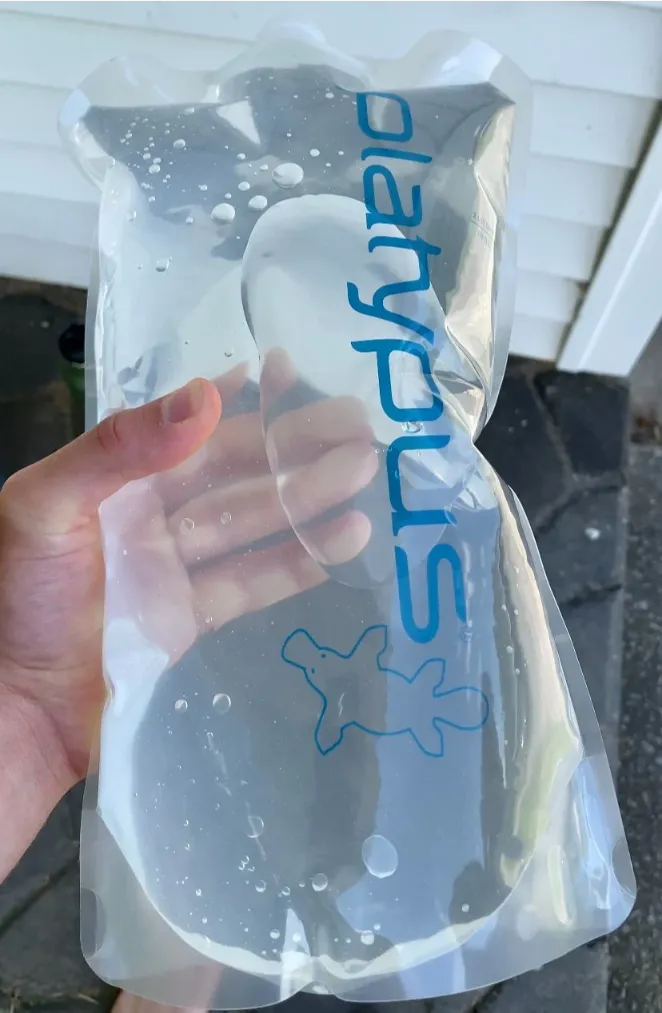
Key Features
The Platy bottle shines with its collapsible design. Imagine having a water bottle that, when empty, can be flattened and rolled up to fit into the tiniest corners of your backpack or travel bag.
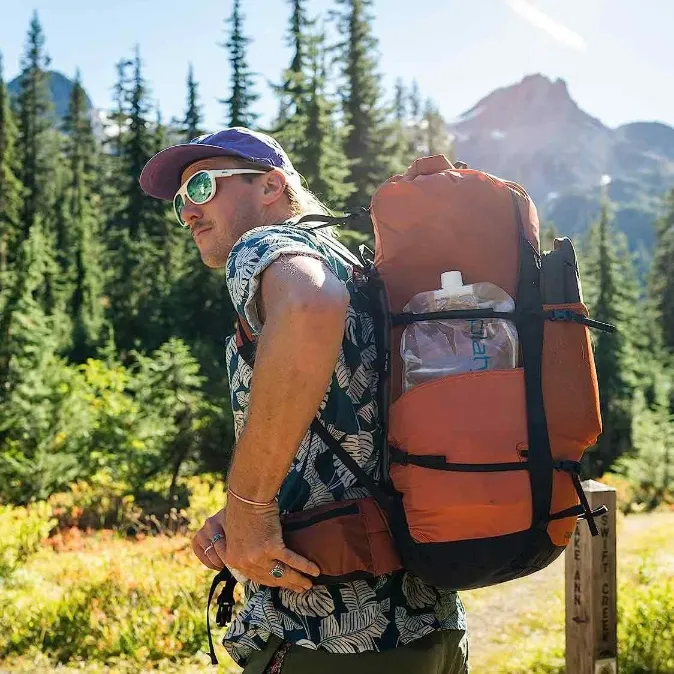
Compared to a hard bottle of the same volume, it’s 80% lighter, weighing in at an almost feather-like 1.3 ounces. And when it’s empty, it takes up only 1/5th the space. Even among other collapsible bottles, these are impressive numbers.
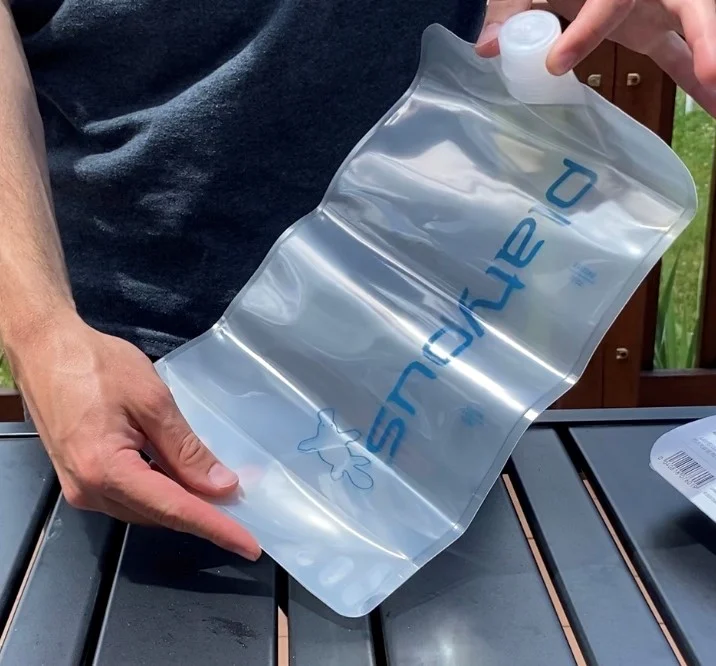
The clear, see-through design allows you to easily check if there’s any debris inside or if it needs a wash. The added volume markings are a convenient touch, helping you keep track of your hydration.
Beyond its primary function, it has a fun bonus feature – it can double as a pillow at night! Just inflate it a bit, and you’ve got a soft place to rest your head under the stars.

Potential Pitfalls
While the Platy bottle is an excellent piece of gear, it’s not without its quirks. The most notable one is the cap. You need to keep an eye on it, especially when refilling or using it with a water filter. It’s easy to misplace, which could leave you in a bit of a bind.
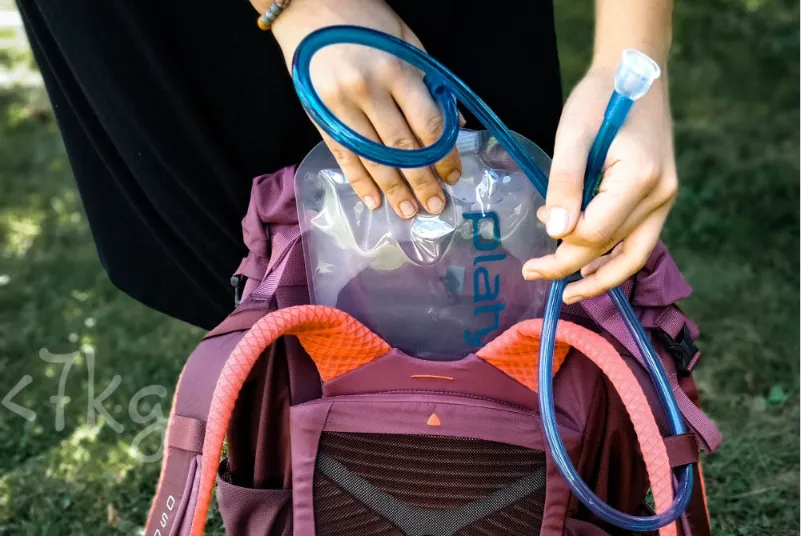
Verdict
For anyone moving towards ultralight packing, the Platypus Platy water bottle makes perfect sense. It outperforms traditional and even other collapsible bottles in both weight and compactness. It snugly fits into those tight external pockets on packs, and you can even stow it away in your pocket when it’s empty.
For just $19, it’s a modest investment that pays off big for those who love to explore the great outdoors with minimal baggage.
Nalgene Sustain
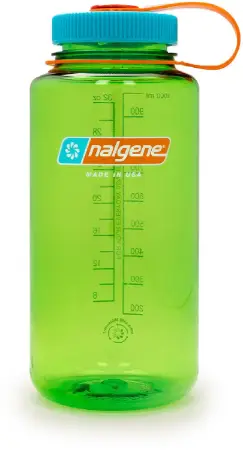
KEY FEATURES
PROS
CONS
Nalgene bottles have been a staple in the hydration game for decades. The Sustain series is their latest leap towards eco-friendliness, making a significant impact on reducing fossil fuel use and greenhouse gas emissions.
Each Sustain bottle incorporates 50% recycled content, equaling eight single-use plastic bottles. It’s a step in the right direction.

Key Features
The Sustain bottle keeps things straightforward – a cylindrical body paired with a screw cap, connected by a retaining strap. This genius little addition means you can hydrate on a mountainside without fearing cap loss.
Its simplicity extends to its leak-proof design – incredibly, it doesn’t even need a gasket to keep water where it should be.

Despite being made of plastic, the taste and smell of your water remain untainted, a critical factor for those sensitive to such nuances. I’ve mixed teas and vitamin powders into mine, and a simple wash leaves it ready for a pure water experience again.
And in terms of durability, the Sustain bottle is tough. It can handle drops and knocks, sporting only cosmetic scuffs while continuing its duty of hydration.
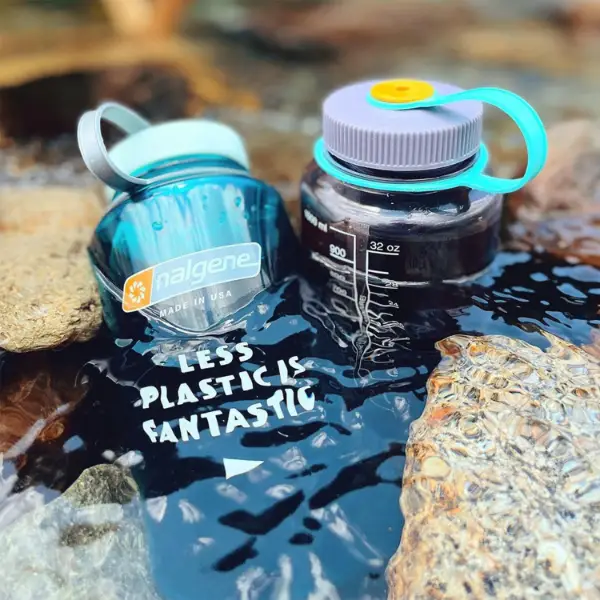
Potential Pitfalls
While nearly perfect, the cap, while sturdy, is the most vulnerable part. A direct fall or severe impact might crack it.
Additionally, while the plastic taste is minimal, those looking for the purity of glass or stainless steel might notice a difference.
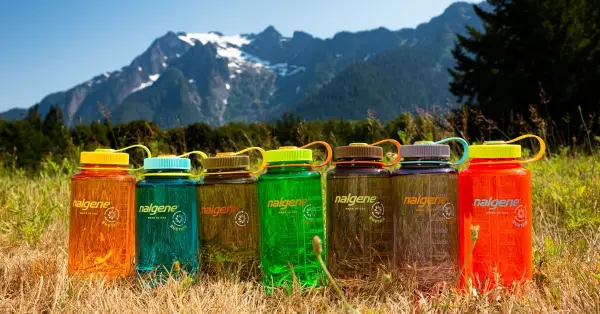
Verdict
At a price range of $14-$19, the Nalgene Sustain water bottle is simply the right choice. Its blend of eco-conscious manufacturing, legendary durability, and simple yet functional design makes it a must-have for anyone from casual hikers to hardcore adventurers.
Are Reusable Plastic Water Bottles Bad for You?

High-quality reusable plastic bottles, specifically those that proudly announce they are free from BPA and BPS, are not bad for you and are certainly not more harmful than the much-touted stainless steel options.
So, if you invest in a high-quality plastic water bottle from reputable brands like YETI, CamelBak, Platypus or Nalgene, you’re making a safe and environmentally friendly choice.
How to Choose a Plastic Water Bottle?
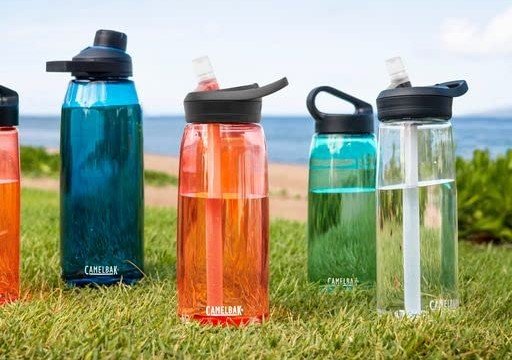
Check for BPA-Free Labels
You want to make sure you’re not sipping on harmful chemicals along with your water. Modern bottles have moved away from using BPA, but it never hurts to double-check, especially if you are buying from lesser-known brands or older bottles.
Consider the Size and Design
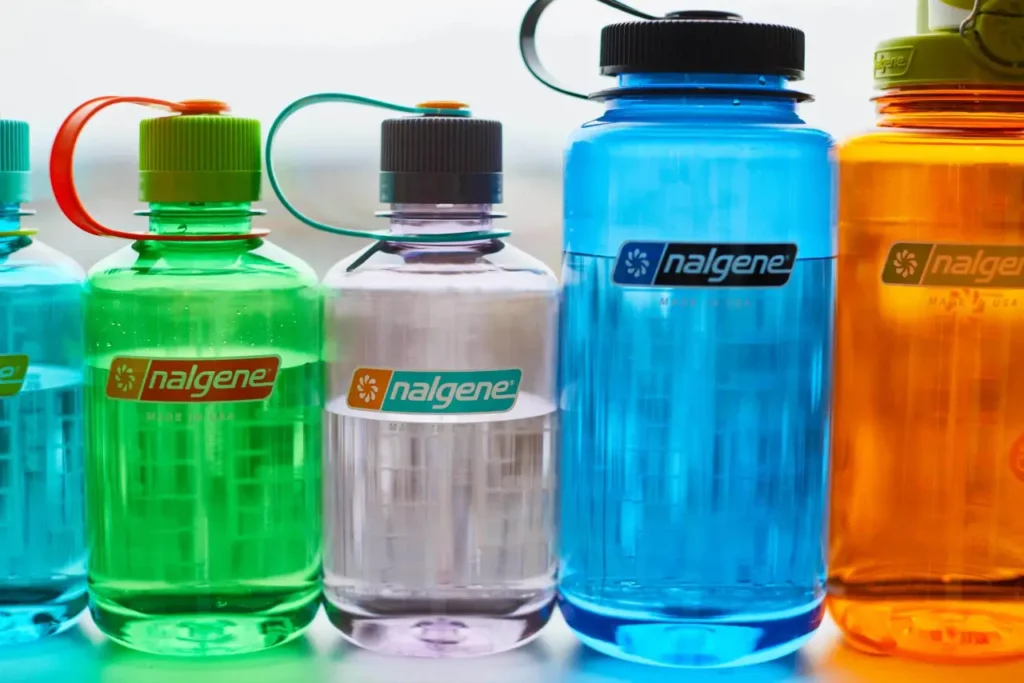
How much water do you drink in a day? Do you prefer a bottle that fits snugly in your car’s cup holder and sits comfortably in your backpack’s side pocket? Then you’ll want to go for a capacity of 18-24 ounces.
If you’re going hiking for the day or need to stay hydrated during a long flight, then 32 ounces or more is what you want.
Some people also love a good handle or strap for easy carrying. Think about where you’ll be taking your bottle and what makes the most sense for your lifestyle.
Look at the Cap
The type of cap can make a big difference. Do you want a flip-top, a screw-on, or a straw?
Each has its perks. Flip-tops are great for quick sips, screw-ons seal tightly for those who are always on the move, and straws can keep you sipping without having to tilt the bottle back.
Ease of Cleaning Is Key
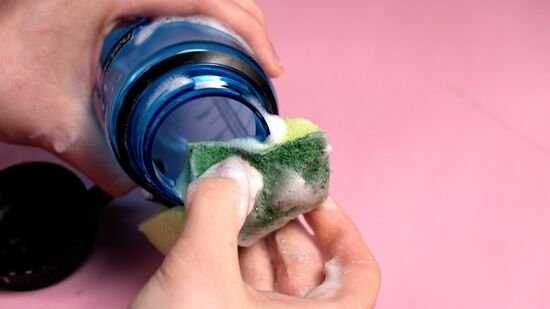
You don’t want to spend more time cleaning your water bottle than you do drinking from it. Look for bottles that are easy to disassemble and clean. A wide mouth often means you can get in there with a brush and give it a good scrub.
Durability Matters
You don’t want a bottle that cracks or scratches at the first drop. Check reviews and see what others say about the bottle’s longevity. A good bottle should withstand daily use and the occasional adventure.
Don’t Forget About Style
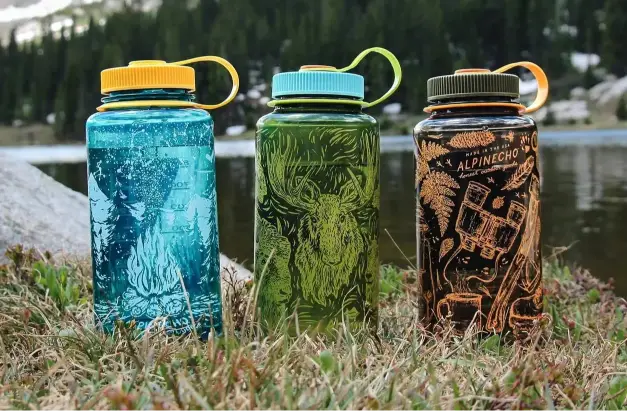
Yes, functionality is important, but so is loving what you use every day. Pick a color or design that makes you happy every time you take a sip. It sounds trivial, but on a tough day, even a small dose of joy from your favorite bottle can make a difference.
Conclusion
If you’re someone who loves to hit the trails, throw a backpack on for a spontaneous adventure, or get active with any kind of sport, you’ll understand why plastic water bottles can be such a game-changer.
I love how affordable they are, how carrying them around never feels like a chore, and how they stand up to the bumps and drops that inevitably happen during our outdoor escapades.
If you find stainless steel bottles too heavy or just not fitting your needs, then I think the options I’ve listed in this guide will be perfect for you.
Frequently Asked Questions (FAQ)
What Type of Plastic Water Bottle Is Best?
The best type of plastic water bottle is undoubtedly one that’s BPA-free. BPA stands for Bisphenol A, a chemical that used to be common in plastics and could seep into your water.
What’s the Safest Plastic for a Water Bottle?
The safest plastic is Tritan. Besides being free from harmful chemicals like BPA, it’s also known for being durable, clear as glass, and practically invincible when it comes to handling the daily wear and tear.
Can Plastic Water Bottles Be Insulated?
You can create a makeshift insulated bottle using just a regular plastic water bottle and some aluminum foil. Wrap the foil around the bottle to reflect heat (or retain it), thereby creating a barrier.
However, don’t expect it to work miracles. It’s a quick fix, and its effectiveness is limited compared to an actual insulated bottle.
You can also invest in a water bottle designed with foam insulation snugly sitting between two layers of plastic. This layer acts like a cozy blanket for your drink, keeping the temperatures steady for much longer than in any standard plastic bottle.

Jeremiah Kowalski
Hey there! I’m Jeremiah, the guy behind WaterBottleAdvisor.com. I used to have a bad habit of guzzling sodas while working remotely, but thanks to reusable water bottles, I’ve turned my hydration game around. After testing over 50 bottles, I’m here to help you find the perfect one to make staying hydrated a joy, not a chore. When I’m not reviewing bottles, you’ll likely find me scaling steep trails around the world, trusty water bottle in hand.
